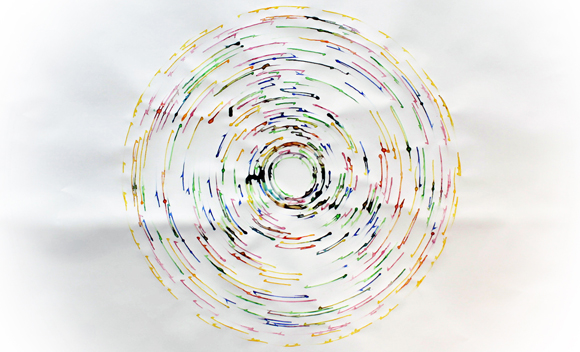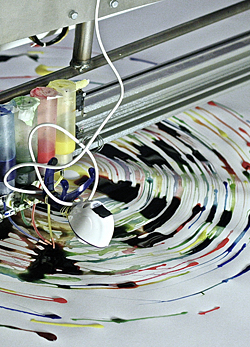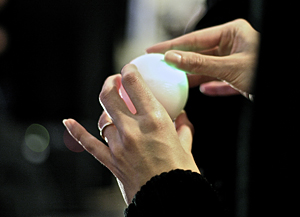The machine that can paint your feelings
Innovation
Are you feeling excited? Metaphone is a machine that captures your emotions and paints an image that expresses them. The use of biodata to interact with technology and to facilitate communication between people is a field that’s becoming ever hotter.

Vygandas Simbelis, a researcher at the KTH Royal Institute of Technology’s Media Technology and Interaction Design department, says: “Here’s how Metaphone works… The user has a ball of wax in their hand, which communicates with Metaphone wirelessly. The ball collects biodata through biosensors, including heart rate, body movement and skin conductance. The machine then draws an image using this data.”
Biodata such as skin conductance cover a range of parameters that describe physiological reactions. If something happens that a person finds particularly exciting, funny or frightening, the biosensors register any of their particular emotions. Emotions that are experienced are then turned into art.

“We use five different colours,” Simbelis says. “Green, blue and black signify excitement or arousal. Yellow and red are connected with the heart rate.”
He says Metaphone is an artistic research project, and that he carries out his artistic research in a technological environment. The difference between this work and that undertaken at art schools is that there, students have greater scope for improvisation whereas at a technical university, the research projects are more carefully monitored.
“The actual interaction between Metaphone and a human being is one of the most important things about it – finding out why people want to use the machine,” Simbelis says. “It’s about exploring the way people can share their inner world with others, how they do that and how they can view their own inner selves.”
Simbelis and fellow KTH researcher Anders Lundström recently added the further dimension of sound to their work with Metaphone at an exhibition at the Digital Art Center in Kista, a northern suburb of Stockholm. Through the use of sound (in other words, the signal that the biosensors pick up is emitted as something audible), an additional interaction loop is developed alongside the visual, which can also have an effect on the person using the Metafone.

Simbelis believes there is no doubt that biodata should be used in the electronics and machinery of tomorrow. The question for him to tackle is how this will actually come about.
“For me, it’s obvious that the principle of sharing biodata will be an aspect of future artefacts,” he says. “I make no distinction between different gadgets. No matter whether they are big machines or little smartphones, there’s always interaction involved.”
The same goes for communication, both between machines and people, and between different people… which brings to mind people’s habitual use of social media today. Do people really wish to show themselves in this way?

“The next step in this research project is to carry out user studies,” Simbelis says. “I want to find out how people feel about being connected to this machine, and about sharing their feelings in this way.”
One thing’s for sure: there are people who are prepared to allow Metaphone to make paintings that illustrate their emotions – paintings that they will want to hang up somewhere, and in this way, use to share their feelings with others.
Peter Larsson
For more information, contact Vygandas Simbelis at +46 (0) 70 - 191 47 06 or vygandas@kth.se.

